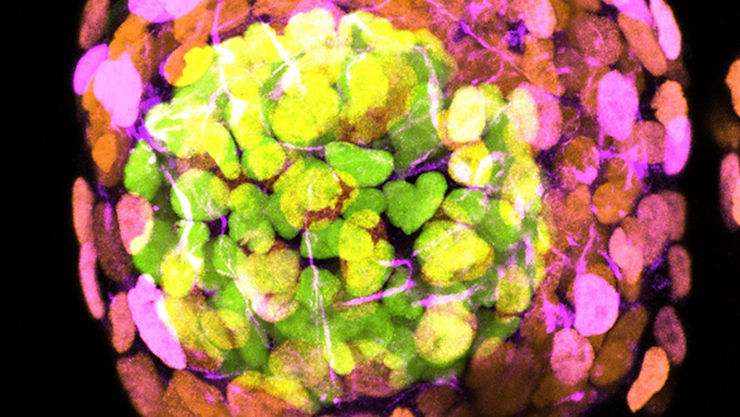By: Winston Wei
A fertilized human egg cell becomes a hollow ball of 200 cells in its first week. Then, the ball attaches itself to the uterus wall, and over the next three weeks, it splits itself into the tissues of the newly conceived baby. Most of what happens during implantation in those three weeks remains a mystery.
Jacob Hanna is a Developmental Biologist at the Weizmann Institute of Science in Israel. He and a few other biologists are making models of human embryos to solve the mystery. The team is coaxing stem cells to make clumps that resemble important features of real embryos.
“We know the basics, but the very fine details we just don’t know,” Hanna said.
In June 2023, Hanna’s team and other groups in Britain, US, and China shared their findings. Although not published, their work attracted interest from other scientists who hope to get more details on human development using embryo models.
Before the embryo model, biologists could only study embryos from abortions and miscarriages. Because of this, not much is known about why most embryos do not survive.
In 1970, after the development of in vitro fertilization, scientists studied embryos donated from fertility clinics. While some countries, like China, banned this research, others allowed it, usually with a 14-day limit. By this time, some resemblance starts to form between the embryo and the human body.
Beforehand, ethicists had warned that making embryo models would only complicate things, but the team of scientists stated that they had not created real embryos.
Tianqing Li is a Developmental Biologist at Kunming University of Science and Technology in China. Dr. Li hopes the embryo models will help cure diseases like cancer.
“Our aims are never for the purpose of human reproduction,” Li said.
Recently, biologists have been making models of embryos for more convenient studying. These models are made from stem cells, which can turn into new tissue given the right condition.
Embryo models have lots of potential. Scientists can take skin cells from patients and douse them with chemicals to turn the skin cells into a stem cell-like state. With more chemicals, the cell would be turned into an embryo model, which could become early blood cells a patient needs after a transplant.
Embryo models may be the key to understanding how we came to be. Although ethicists warn against it, this research captures many biologists’ attention.











